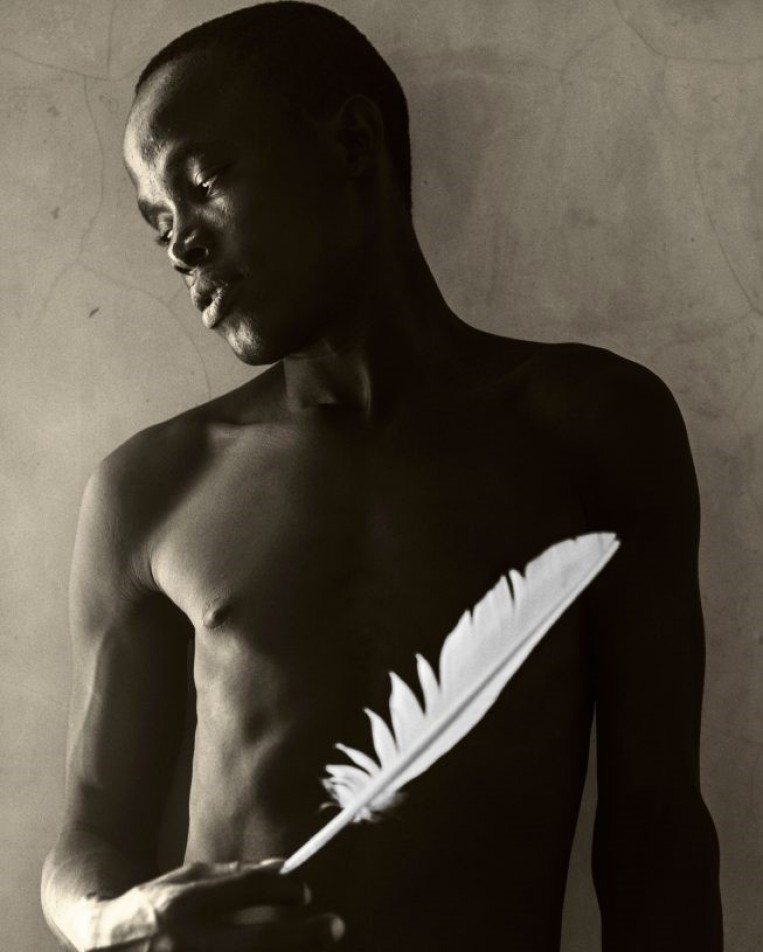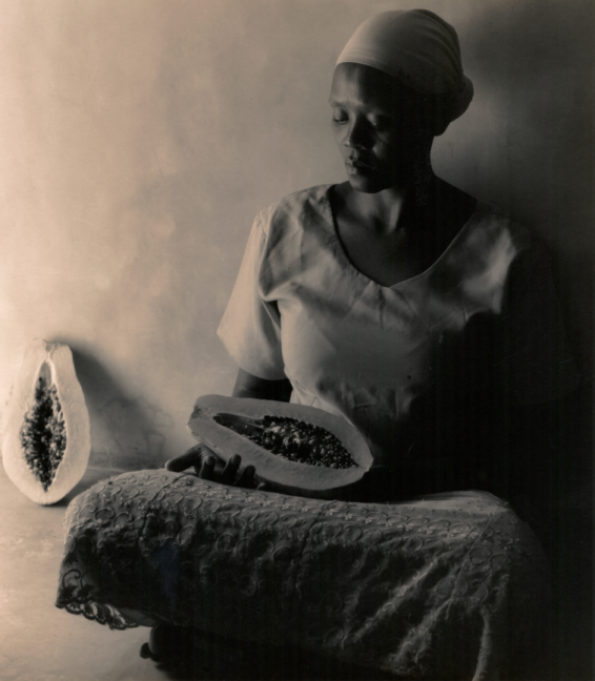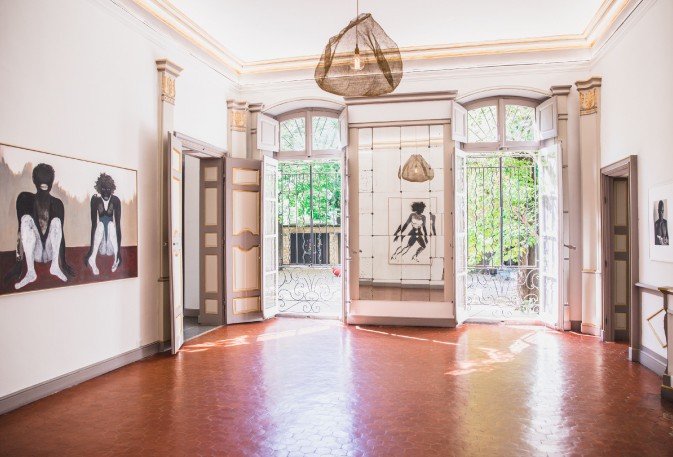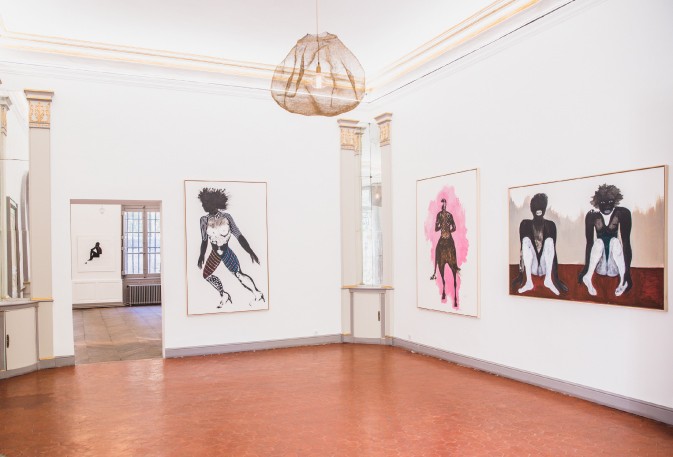08 June 2019 -
30 September 2019


‘Une muse nommée Afrique’ invites us to consider the vision of two female artists for whom Africa and her people are a powerful source of inspiration.
In the work of Margaret Mann, one senses that the encounter with the African model has engendered the emergence of a particular photographic aesthetic. In her portraits of the local Kenyan community, she captures her subjects in natural stillness with flashes of white as an accessory or backdrop. In this inversion of classical, Greek sculpture, darkness and light are juxtaposed to timeless effect. The photographer’s sentiment is unequivocal, her passion palpable: “Africa casts a unique light at the core of one’s heart, igniting a quest – an inner journey of authenticity and truth.”
If the physical presence of Africa and its people exerts an undeniable influence on artistic output, what of the figures of Catherine Starkman, created quite literally ‘Out of Africa’ - she has never been there.
Her large-scale, deeply emotional paintings include both African portraits and figures and revisit a theme she had already started to develop in New York from 2010 onwards.
“These works allow me to examine themes that matter to me – inequality, injustice, racism. They also give me a way to study the beauty and the existence of the other, someone different, and through this to elaborate a form of artistic discourse that is also both philosophical and metaphorical.”
When the author Isak Dinesen (Karen Blixen) wrote that ‘the discovery of the dark races was a magnificent enlargement of all (her) world’ she acknowledged her vast creative debt to Africa and its people. Her African period lasted a lifetime. So too Picasso, whose ‘deepest artistic emotions’ sprang from his encounter with the rigorously simple sculptures of an African priest.
Their aim is neither political, nor tainted by eroticism, romanticism or colonialism - characteristics common to the historical African artistic agenda. Rather, they all seek to draw us into the intimate and immediate dialogue between artist and subject, the observer and the observed. And in so doing, they, as should we, celebrate Africa, its energy, its traditions, its humanity.
‘Une muse nommée Afrique’ invites us to consider the vision of two female artists for whom Africa and her people are a powerful source of inspiration.
In the work of Margaret Mann, one senses that the encounter with the African model has engendered the emergence of a particular photographic aesthetic. In her portraits of the local Kenyan community, she captures her subjects in natural stillness with flashes of white as an accessory or backdrop. In this inversion of classical, Greek sculpture, darkness and light are juxtaposed to timeless effect. The photographer’s sentiment is unequivocal, her passion palpable: “Africa casts a unique light at the core of one’s heart, igniting a quest – an inner journey of authenticity and truth.”
If the physical presence of Africa and its people exerts an undeniable influence on artistic output, what of the figures of Catherine Starkman, created quite literally ‘Out of Africa’ - she has never been there.
Her large-scale, deeply emotional paintings include both African portraits and figures and revisit a theme she had already started to develop in New York from 2010 onwards.
‘Une muse nommée Afrique’ invites us to consider the vision of two female artists for whom Africa and her people are a powerful source of inspiration.
In the work of Margaret Mann, one senses that the encounter with the African model has engendered the emergence of a particular photographic aesthetic. In her portraits of the local Kenyan community, she captures her subjects in natural stillness with flashes of white as an accessory or backdrop. In this inversion of classical, Greek sculpture, darkness and light are juxtaposed to timeless effect. The photographer’s sentiment is unequivocal, her passion palpable: “Africa casts a unique light at the core of one’s heart, igniting a quest – an inner journey of authenticity and truth.”
If the physical presence of Africa and its people exerts an undeniable influence on artistic output, what of the figures of Catherine Starkman, created quite literally ‘Out of Africa’ - she has never been there.
Her large-scale, deeply emotional paintings include both African portraits and figures and revisit a theme she had already started to develop in New York from 2010 onwards.
“These works allow me to examine themes that matter to me – inequality, injustice, racism. They also give me a way to study the beauty and the existence of the other, someone different, and through this to elaborate a form of artistic discourse that is also both philosophical and metaphorical.”
When the author Isak Dinesen (Karen Blixen) wrote that ‘the discovery of the dark races was a magnificent enlargement of all (her) world’ she acknowledged her vast creative debt to Africa and its people. Her African period lasted a lifetime. So too Picasso, whose ‘deepest artistic emotions’ sprang from his encounter with the rigorously simple sculptures of an African priest.
Their aim is neither political, nor tainted by eroticism, romanticism or colonialism - characteristics common to the historical African artistic agenda. Rather, they all seek to draw us into the intimate and immediate dialogue between artist and subject, the observer and the observed. And in so doing, they, as should we, celebrate Africa, its energy, its traditions, its humanity.

